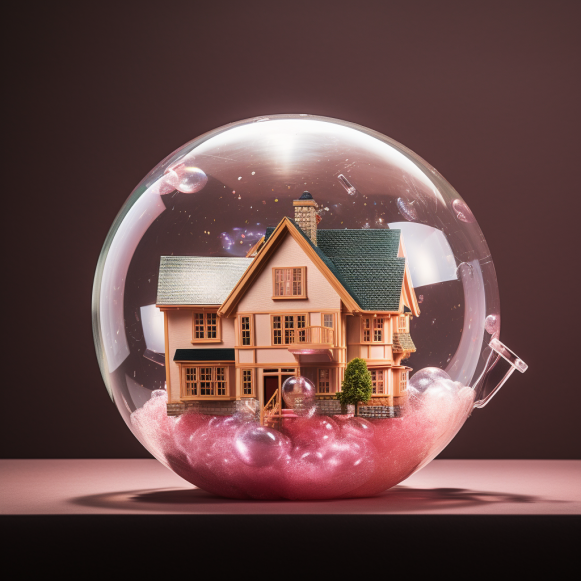Goldman Sachs says home prices are now more unaffordable for the average buyer than they were during the 2008 housing bubble. Here are the 2 things they say would have to happen for home prices to crash.

- Goldman Sachs’ Lotfi Karoui says homes are more unaffordable than during the mid-2000s bubble.
- But he still sees home prices rising in the months ahead.
- In a recent note, he said his view relies on no “economic shocks” occurring.
It’s even more difficult to buy a home now than it was at the peak of the mid-2000s housing bubble.
According to a new Goldman Sachs analysis, current housing costs, including home values and mortgage rates, are even more disconnected from income levels than they were between 2004 and 2008, when US home prices surged before collapsing by more than 25%.
“Affordability for the incremental buyer is worse than it was at the peak in 2006 before the crash,” Goldman’s chief credit strategist Lotfi Karoui wrote in a note to clients on Tuesday.
Affordability is defined by the bank as a buyer spending 25% of their monthly income on a 30-year mortgage payment after a 15% down payment. The chart below shows that, while prices and interest rates have continued to rise, incomes have not kept pace, implying that what would be an affordable price is far below where costs actually are.
Despite the disparity, Karoui does not expect a drop in home prices like the one that occurred in the mid-2000s, for a variety of reasons.
For one thing, the labor market is still very strong, which means that demand will be supported — if people still have jobs, they have money coming in to save for a home. Unemployment remains low at 3.8%, with the US adding 336,000 jobs last month.
Rising unemployment harmed housing demand during the Great Recession, causing home prices to fall. This relationship is illustrated in the chart below, which shows monthly nonfarm payroll numbers and year-over-year home price appreciation. It is worth noting that the zero level for non-farm payrolls on the left axis is higher than the zero level for home price appreciation on the right, implying that falling payrolls precede falling home prices.
The other side of the Great Recession’s rising unemployment was that many homeowners foreclosed on their homes, dumping supply onto the market at the same time that demand waned.
Another reason Karoui believes things have changed today is what has occurred in the adjustable-rate mortgage market. There are far fewer adjustable-rate mortgages on the market today than there were in the mid-2000s, and the fixed period on the front end of the mortgage is typically longer, at around five years, as opposed to two or three, according to Karoui.
Furthermore, credit conditions were very loose prior to the mid-2000s crash, which meant that a larger pool of buyers could get a mortgage regardless of their credit score or income levels. Then, as the Fed raised interest rates, conditions tightened, lowering demand. Credit conditions are already tight today, which means that those with mortgages now are financially stronger than many in the mid-2000s, and there is unlikely to be a severe credit tightening that will crush demand.
Given these differences, Karoui anticipates a 3.5% increase in home prices by the end of 2024.
However, he stated that his view is contingent on no “negative shocks” to the economy, which could do two things: cause unemployment to rise, reducing demand; and cause people to list their homes for sale, increasing supply. In essence, a recession could cause home prices to fall.
Karoui and his Goldman colleague Jan Hatzius, the bank’s chief US economist, do not see the US economy slowing. Many other Wall Street economists feel the same way. However, whether one will appear in the coming months remains to be seen. While the labor market and consumer spending remain strong, classic recession indicators such as the Treasury yield curve and The Conference Board’s Leading Economic Index are raising concerns.
According to prior recessionary timelines, Piper Sandler’s Chief US Equity Strategist Michael Kantrowitz stated last week that unemployment still has time to begin trending upward. During the Great Recession, for example, unemployment remained at current levels for several months after the Treasury yield curve inverted before rising significantly.






